Ransomware holds your data hostage, making it an attractive way for cybercriminals to earn money without resorting to credit card fraud or forging checks.
Cybercriminals often target organizations because ransom payments offer them the potential for large profits. Victims with regular backups can restore their data without incurring ransom payments, thus saving both parties time and money in ransom payments.
Joseph Popp, a Harvard-educated biologist who used floppy disks infected with ransomware to mail infected questionnaires about AIDS research. Nowadays, attackers utilize exploit kits to target any network-connected device with outdated software.
What Ransomware Allows Hackers To Do?
Ransomware attackers can gain entry to any computer system and encrypt files. Once encrypted versions have been placed on a system, restoring original versions becomes increasingly difficult without an associated decryption key. Furthermore, various ransomware variants often delete backup and shadow copies to further complicate recovery efforts.
Cybercriminals often target organizations or companies they suspect possess valuable data as well as the financial means to pay a substantial ransom payment. Healthcare, manufacturing, banking and other mission-critical industries tend to attract larger ransom payments.
Attackers may use ransomware to attack individuals, threatening to publish private data or pornography online unless payment is made immediately. The FBI recommends reporting ransomware attacks even if victims don’t plan on paying the demanded sum – doing so helps authorities track down attackers and prosecute them; additionally it enables partnerships that may help identify or track down stolen or leaked data.
Hacker Techniques
Ransomware seeks to encrypt victim files so they cannot be recovered without a decryption key. How this occurs differs by variant, but usually attackers search for certain types of files and then encrypt them using mathematical keys that can only be unlocked by paying a ransom sum demanded by attackers.
Attackers tend to target specific organizations such as hospitals, law firms or even government agencies with sensitive data worth millions in compensation. Furthermore, attackers typically target systems which are easy to breach via Remote Desktop Protocol (RDP) and those containing weak passwords.
Some variants of ransomware can be highly sophisticated, such as Ryuk ransomware which was capable of disabling Windows recovery functions and employing behavior detection to monitor system activity for suspicious patterns – making this approach more effective than signature-based detection but it may produce false positives. Attackers may employ several tactics to evade anti-virus software and other security measures, including hiding their malware within image file formats, using proxy servers to reroute communications or altering ransom payment instructions.
1. File Encryption
Ransomware typically targets computer files by employing an encryption algorithm known as cryptors to encrypt them and make executable programs unreadable without a key, making detection by anti-virus and IDS systems harder while making reverse engineering or hijacking harder to accomplish.
Once malicious software infiltrates a system, it quickly begins encrypting files and data on all devices or folders until victims pay a ransom demand. Early ransomware variants used only file encryption; however, due to regular data backups many victims could restore their information without needing to pay. As a result hackers began employing additional extortion tactics as an incentive for victims to pay ransom.
At this point, it is critical to ensure all essential data has a sound backup strategy in place. Automated and regular backups should be performed off-network to minimize their effect on recovery process and help organizations avoid paying ransom fees. When reviewing data files for signs of a cyberattack such as files with strange names or no extensions; sudden changes in file locations; or new, unknown files being detected as well.
2. Data Theft
Escalation to ransomware infections can be devastating for businesses of any size, rendering systems unavailable until restoration takes place. Even with backups in place, disruption may force systems out of service for extended periods.
Criminals typically use exploit kits to gain entry to networks through internet-facing ports, remote desktop logins and other points of entry. Once inside, they can use this access to search for more valuable data which they then encrypt for their own purposes.
Once their data has been encrypted by ransomware, victims have two options for recovering it: pay a ransom to secure decryption key or restore their own backups. Experts warn against paying ransoms because doing so encourages attackers, puts victims on lists for future attacks and gives no guarantee that all stolen information will be returned.
Attackers typically target organizations with sensitive, valuable information – like healthcare facilities that store patient records or law firms that keep client files. Attackers look for targets willing to pay quickly in order to cover up breaches in security.
How Ransomware Works?
Cybercriminals use ransomware to deny victims access to their files by encrypting them and demanding payment for a decryption key. Once hackers possess this key, they may deliver back your files – though there’s no guarantee they will abide by their promise – remember, these are criminals and may not always have your best interests at heart!
Ransomware attacks have grown increasingly rampant over time, and cybercriminals are continually developing new tactics to obtain additional data. Attacks often begin through phishing campaigns posing as trusted contacts and/or malicious web apps and mobile devices containing viruses; hackers also utilize exploit kits to exploit vulnerabilities and spread ransomware.
Attackers have increasingly turned to ransomware as a service (RaaS), whereby attackers pay third parties to deploy malware for them and make it more difficult to track attackers and stop them. Hackers have found an extremely lucrative business model in ransomware; annual earnings from it are predicted to surpass $265 billion by 2031.
Step 1. Infection and Distribution Vectors
Malware refers to any software that allows unauthorized access to user systems, while ransomware is a specific type that encrypts data files before demanding payment to gain back access. Such financially motivated attacks pose serious threats both organizations and individuals, as demonstrated by Verizon’s 2023 Data Breach Investigations Report and Sophos’ State of Ransomware report.
An attacker targeting an organization that’s susceptible to ransomware must first gain entry through one or more entry vectors – such as phishing or vulnerability exploiting. Once inside, they use “lateral movement” techniques to map all the local systems and domains they currently have access to (known as lateral migration).
Ransomware viruses typically focus their efforts on finding valuable data and exfiltrating it; this includes login credentials, customer personal data or intellectual property that could later be sold on the dark web for double extortion or double sales. Many high-profile ransomware attacks have targeted large organizations such as Colonial Pipeline, JBS USA and Ireland’s national health service; their deeper pockets may mean they pay up more readily in order to protect their information.
Step 2. Data Encryption
Ransomware works by encrypting files and data on victim computers and networks, rendering them inaccessible until payment of the attacker is made for their release.
Newer variants of ransomware often encrypt network drives and disable Windows System Restore to prevent victims from recovering their files – like how NotPetya caused havoc across several global companies, including shipping giant A.P. Moller-Maersk, hospital in Poland and Chernobyl nuclear plant (forced workers to manually check radiation levels).
To maximize profits, some variants of ransomware also employ self-spreading capabilities to gain maximum profit from victims. NotPetya remake GoldenEye for instance spread across over 2000 targets including JBS USA and Costa Rica government officials – providing ample opportunity for ransom payments.
Data encryption helps reduce opportunities for theft from lost or stolen devices, accidental password sharing and permission granting when data is at rest (not being used or transferred). To maintain maximum protection of encryption key and information from outsiders using side channel attacks or cryptanalysis.
Step 3. Ransom Demand
Ransomware can do numerous things once it gains access, including encrypting some or all of a victim’s files with sophisticated payloads that use cryptographic keys known only to their attacker. They then send a ransom demand message demanding payment in form of untraceable Bitcoin tokens for decryption services.
Victims must contact an attacker via an anonymous email or web page and make a ransom payment. Many attackers will attempt to negotiate a fair price for their data, but if the victim refuses, attackers may threaten to release sensitive or embarrassing details into public view.
Some ransomware variants now include components that search a victim’s computer for valuable files – known as “data theft.” This technique has been employed by malware such as LockBit, Maze and Cerber in 2019 and 2020. When targeting large organizations this becomes particularly dangerous as an attacker could put them at risk of regulatory noncompliance or expensive fines from regulators; revenue could also be at stake until attackers reestablish systems and secure systems again.
Ransomware and Ransomware-As-A-Service Business Models Allow Hackers to Profit From Extortion
Cybercriminals have increasingly turned to ransomware attacks against businesses and individuals. Malicious links found in emails or messaging platforms such as WhatsApp or compromised websites serve as conduits of infection.
Attackers demand payment in order to access encrypted files, download data and post it online – targeting small and midsized businesses with weaker cybersecurity defenses as a prime target.
Types of Ransomware and What They Do
Crypto ransomware or encryptors lock victims out of their files until they pay a ransom to decrypt them. Recently, attackers have also started including timed delays into ransomware malware to make backup restoration more challenging, further complicating any potential attacks against companies.
Other strains, known as doxware or leakware, double-extort businesses by threatening to release any stolen data publicly unless a ransom payment is received before a certain date – potentially doing lasting damage to both their reputation and finances. Attackers frequently target small businesses whose weaker cybersecurity makes them more susceptible and less likely to take preventive steps against threats.
RDP attacks – in which attackers use brute-force or purchase credentials off of the Dark Web to gain unauthorised access – are another common method used by ransomware attackers to enter an environment. Furthermore, IoT devices present new attack vectors for hackers; holding hostage fridges or connected cars could provide another opportunity.
1. Crypto ransomware or encryptors
Crypto ransomware encrypts files or systems, rendering them inaccessible and unusable until an attacker receives a ransom payment in cryptocurrency (Bit-Coin). Victims typically must pay a specific sum in Bitcoin in order to unlock their data – with attackers often threatening deletion or leakage if payment isn’t made immediately.
Attackers typically target organizations based on their vulnerabilities or likelihood of paying a ransom demand, including utilities like healthcare facilities and energy companies as well as law firms and financial institutions with sensitive data.
Ransomware attacks can be devastatingly costly to organizations, forcing them to shut down systems and rush to pay the demanded amount as quickly as possible. This increases downtime costs and is why attackers employ techniques such as deadlines or threats of publishing private data online in order to increase urgency and coerce victims into making payments – although paying won’t guarantee you an encryption key to decrypt your data and may lead to further attacks in the future.
2. Doxware or leakware
Cybercriminals often rely on ransomware-as-a-service (RaaS) arrangements in order to generate profits through ransomware extortion without developing their own malicious code. These partnerships allow cybercriminals to profit from ransomware without the hassle and expense associated with developing such malicious code themselves.
RaaS attackers typically gain entry to an organization’s systems through phishing emails with malicious attachments. Once there, they look for sensitive files that could potentially compromise security before encrypting whatever can be encrypted and demanding money for restoration of these files.
However, some hackers are employing increasingly bold strategies. For instance, they might publish compromised information on data leak websites or sell it through Dark Web channels for sale; this has resulted in high-profile victims such as police departments and major businesses being affected.
Some organizations, such as hospitals and law firms, are considered particularly vulnerable by criminals and may pay ransom to keep hacking incidents quiet. Though law enforcement officials strongly discourage paying ransoms out of principle, about 65 percent of victims do anyway because the cost associated with paying is usually less than recovering lost data.
3. Ransomware as a Service
Cybercriminals employ ransomware-as-a-service (RaaS) business models to monetize their attack methods. By contracting affiliates to deploy malware for them in exchange for a share of ransom money, reports Bleeping Computer. Using RaaS reduces technical skills needed to launch attacks while helping nefarious actors scale operations quickly.
REvil ransomware family is one such example, which encrypts networks before threatening to release victim data unless payment of a ransom within a set timeframe is made. Conti is another popular ransomware variant that works similarly.
While eliminating ransomware entirely is impossible, you can minimize attacks by adopting a multilayered security approach and employing two-factor authentications on endpoints. Furthermore, people need the tools, support and knowledge they require in order to identify and report phishing attempts.
As Internet of Things (IoT) devices continue to proliferate, attackers will seek new methods of infiltrating them with ransomware and holding valuable information hostage. Connected cars and home appliances could allow hackers to display ransom notes on dashboards or refrigerators of vehicles or homes respectively.
4. Lockers
Ransomware comes in various forms, but they generally fall into two main categories: crypto-ransomware and lockers. Crypto-ransomware encrypts valuable files to prevent access until their ransom payment has been made; on the other hand, lockers take it one step further by locking out users from devices and applications, often with countdown clocks to increase urgency and drive victims towards paying the ransom.
Check Point has identified Rorschach as one of the fastest ransomware variants based on file encryption speed, targeting system boot records and NTFS files, making recovery more challenging than with other ransomware variants.
Ragnar Locker stands out by not encrypting data but locking applications instead. Additionally, this program warns victims not to contact law enforcement and threatens to leak stolen information if law enforcement contacts them directly. Recently it was taken down in a global takedown operation along with its dark web portal; such operations provide hope to companies dedicated to safeguarding their environments.
5. Fileless Attacks
Fileless attacks are malware that don’t need to upload malicious files in order to make their impact known; rather, they use native programs on the machine like PowerShell and macros for execution of an attack without setting off alarm bells with internal monitoring tools.
Attackers have the capability to steal data or encrypt company systems for ransom without being detected by traditional antivirus tools, exploiting vulnerabilities in existing software or hardware. A cyber awareness training program can teach employees to be wary of suspicious websites or email attachments while regular patching of operating systems and applications can close off potential entryways into your network.
Some of the most dangerous examples of fileless attacks use scripting languages like VBScript or JavaScript to execute malware within web browsers, Microsoft Office applications and other popular user software – giving attackers an entryway into networks through stolen information on one computer to later infiltrate others and gain lateral entryway into others on it. Attack vectors evolve frequently evading detection but adopting cybersecurity best practices may help reduce their impact.
How to Protect Against A Ransomware Attack?
Ransomware attacks take control of information you rely on daily for business operations and encrypt files and data or shut down computers completely, forcing victims to pay a ransom in order to access their vital files again. It can be challenging and time consuming for victims of these attacks to recover; recovery often requires paying an exorbitant ransom fee to unlock files again.
While ransomware gangs emerge daily, there are ways to protect yourself. Implement basic cybersecurity best practices as the starting point.
Use a multilayered security approach that blocks malicious websites, attachments and downloads on endpoint devices. Enable two-factor authentication for critical services and ensure users use strong passwords.
Disabling AutoPlay on workstations that automatically run media such as USB drives, memory sticks and CDs prevents cybercriminals from using these devices to inject ransomware onto your network.
Education of employees on how to recognize suspicious attachments, links and emails is crucial in protecting businesses against ransomware attacks. Furthermore, keeping software updated prevents known vulnerabilities being exploited by ransomware attacks. Regular backup of essential files to an external drive or the cloud reduces their impact.
1. Cyber Awareness Training and Education
Once a ransomware attack starts, it can spread rapidly through a network – this process is known as network propagation. Malware can also gain entry via drive-by download attacks, maladvertising (fake ads that release ransomware), removable media like USBs and pirated software.
Education about ransomware and malware should be at the core of every organization’s cyber strategy. Human error remains one of the leading causes of data breaches, while employees represent an invaluable first line of defense against attacks like ransomware.
Security awareness training teaches employees to recognize ransomware warning signs like suspect sender addresses, poor grammar and urgent demands; it teaches them how to report suspicious emails for further analysis; it can also inform employees about other cyberattacks like phishing; it is the main way ransomware attacks businesses; attackers often target specific organizations with sensitive data that might pay up quickly in order to remain undetected by cybercriminals – hospitals and law firms in particular may be targeted based on perceived value as targets – such as hospitals or law firms which could pay up quickly to keep breaches quiet!
Ransomware malware allows hackers to gain access to your files by encrypting them, then demands payment in return for decryption keys.
Many cybersecurity experts warn against paying cybercriminals because this can encourage further ransomware attacks. However, some companies still make a cost-benefit analysis and decide to pay the attackers in order to limit future damage.
2. Continuous data backups
Ransomware works by encrypting files on your system and replacing them with encrypted versions, then demanding payment through cryptocurrency such as Bitcoin in order to unlock them. Unfortunately, even paying the ransom doesn’t always guarantee access to files – some malware actually erases your data instead of providing access after payment has been made, leading to permanent data loss.
Continuous data backup based on best cybersecurity practices and regularly tested can ensure you can recover from ransomware attacks without having to pay a ransom demand. Unfortunately, even the best backups won’t do much good if they can’t be activated during an attack.
After being hit with ransomware, it’s essential to activate your incident response plan and protect the affected systems from further attacks. This involves identifying and fixing vulnerabilities, reviewing and retraining employee passwords, implementing Zero Trust security principles, and using virtual private networks (VPNs) to better isolate systems. In addition, testing backups and running drills is helpful in order to verify backup integrity quickly before restoring systems quickly.
3. Patching
Software vulnerabilities are a frequent entryway into ransomware attacks. The reason is simple: software doesn’t always function flawlessly and there may be time between discovering vulnerabilities and their use by cyberattackers to exploit them – making patch management essential.
Patching for ransomware helps defend against attacks by decreasing the vulnerabilities hackers can exploit, while keeping software up-to-date can provide added protection from modern types of ransomware, such as lockers and scareware.
Anti-ransomware technology will protect your devices by blocking spam emails containing executable files, pop-up ads and any other threats from accessing them – helping reduce ransomware infiltration risk along with data breaches and malware threats. In addition, comprehensive security solutions offer central consoles that scan for vulnerabilities to alert you about potential ransomware attacks; taking a preventive approach toward safeguarding both data integrity and infrastructure integrity of organizations and infrastructures.
4. User Authentication
Ransomware must first authenticate user login credentials to gain entry to a system, often through services like Virtual Private Network (VPNs), Remote Desktop Protocol (RDP) or other similar systems designed for remote workers to gain access to corporate networks. Once hackers gain access, they can steal or guess these logins to gain entry and download their malware that then takes control of a targeted computer system.
As soon as ransomware gains access to a system, it typically begins encrypting files. While earlier variants were relatively careful about selecting which files they encrypted, recent attacks are becoming increasingly aggressive with regard to file selection; some even target backup or shadow copies to make data restoration harder for victims without access to decryption keys.
To mitigate risk, organizations should adopt a zero trust architecture which allows granular security policies for users and devices across the enterprise, as well as MFA for privileged access to systems. Furthermore, organizations may want to implement risk management best practices with any third-party providers who deliver mission critical services (i.e. MSPs).
Reduce the Attack Surface
Many cybercriminals use ransomware as a method for breaking into larger networks. It may spread via phishing emails with malicious attachments, compromised websites or fraudulent links and can prove immensely profitable for cybercriminals.
Once ransomware infiltrates a computer, it encrypts files to render them unusable, prompting an attacker to demand payment – often through cryptocurrency like Bitcoin – in order to decrypt and restore them. Although simply uninstalling malware may restore access to some files, but this will not decrypt them; because only the attacker holds access to the key that unlocks them.
Attackers target specific markets to maximize profits and ease of attack. Hospitals are popular targets because hospital staff may pay the ransom in order to gain access to critical patient records again. Law firms may be vulnerable target, with sensitive files often stored without protection on unprotected file systems.
1. Phishing Messages
Most ransomware attacks begin with an email designed to look innocent, drawing employees in by promising an attachment they appear harmless – this action downloads and installs malware onto a system, encrypting data. Some variants even feature self-spreading capabilities so as to expand an attack across an entire network.
Data backups provide businesses with an advantage, enabling them to restore encrypted files without paying a ransom fee. Unfortunately, many do not take this step, making them easy targets for cybercriminals and their ransomware attacks. Small and medium-sized businesses (SMBs) in particular often lack adequate cybersecurity protections, making entry easier for hackers as well as wider spreading of ransomware infections.
Maintaining updated security systems and implementing strong user authentication are the best ways to reduce risk from ransomware attacks, including making sure ports don’t open directly onto the internet unless there is a valid business reason, using complex passwords with multi-factor authentication for remote-access accounts and using complex passwords with multi-factor authentication on remote-access accounts.
2. Unpatched Vulnerabilities
Ransomware attacks often start from one single vulnerability. This could be anything from employees clicking on malicious email attachments, cybercriminals gaining entry via stolen credentials or cracking them open, or businesses leaving open ports and software on the internet.
Once malware infiltrates a system, it can encrypt files to render them unusable, before sending out an ultimatum demanding payment in cryptographic currencies like Bitcoin to decrypt them. Otherwise, cybercriminals may threaten to publish private data online without payment being received in return.
Some ransomware variants feature self-spreading capabilities that make infection spread much simpler for attackers. WannaCry and its variants were notable examples, taking advantage of an EternalBlue exploit developed by NSA hackers but leaked by Shadow Brokers hackers to automatically attack across networks; other attacks have spread via file-sharing networks or malvertising (legitimate digital ads that have been compromised by hackers).
3. Remote Access Solutions
Ransomware variants generally require administrative access in order to access files, drivers and registry keys – this necessitates cybercriminals stealing user credentials either legally acquired from authorized user accounts, buying them on the dark web or cracking them using brute force methods in order to log onto networks or computers and deploy ransomware directly.
Ransomware can spread via both direct attacks and through other malware infections; this was the method utilized during a ransomware incident on the U.S. Colonial Pipeline in May 2021 – one of the largest ransomware incidents against critical infrastructure to date.
To reduce this attack vector, organizations should ensure remote ports aren’t exposed to the internet and implement Privileged Access Management solutions that enforce strong passwords and multi-factor authentication for privileged accounts. Furthermore, these tools should detect when new IAM, network security or data protection resources are created so as not to go undetected by IT teams; additionally they may quarantine or disconnect endpoints exhibiting suspicious behaviour as well as block C&C server connections to block lateral movement of threats.
4. Mobile Malware
Ransomware attacks are not limited to desktop computers; mobile malware can also infiltrate phones and tablets through malicious apps, SMS messaging services and corporate collaboration platforms.
Ransomware, one of the fastest-growing forms of malware, denies users access to their files by encrypting them, then demanding payment in exchange for a decryption key from hackers. While ransomware attacks have grown increasingly widespread over time, taking certain precautions can lower your risk.
Early variants of ransomware focused purely on file encryption; however, hackers have since expanded to data theft in order to entice victims into paying. Before encrypting files, attackers typically search an infected device for sensitive data like login credentials, customer records or intellectual property and download copies for themselves before commencing with file encryption.
Once attackers have your money, they are no longer interested in helping restore access to your files. To prevent this from happening, practice continuous patching and whitelisting software on all infected devices so that any potential malware infections can be eradicated before it has the chance to cause further damage.




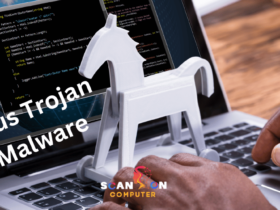

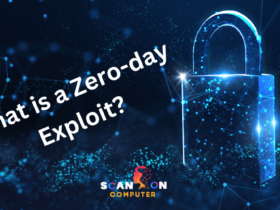
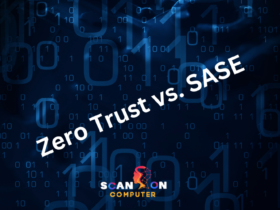
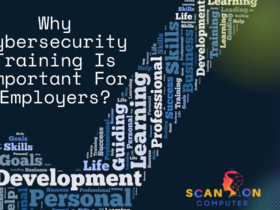
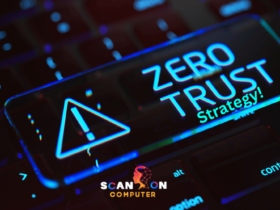
Leave a Reply
View Comments